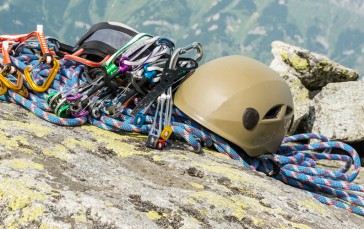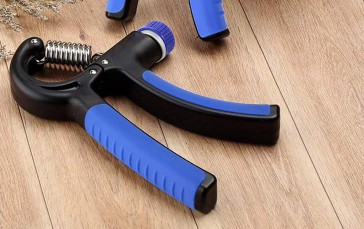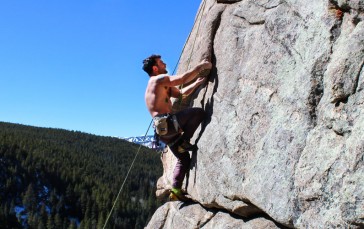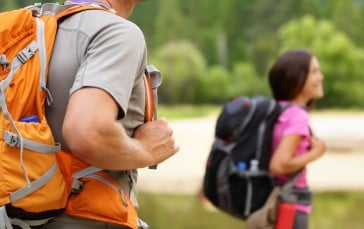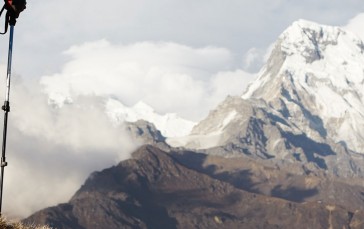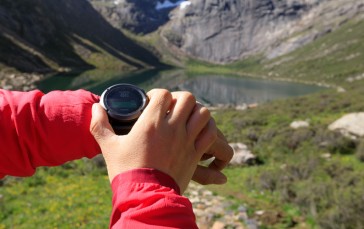Women’s fashion is ever-evolving, and one of my favorite trends that graced the 2010s was the worldwide embracement of athleisure. Having been an athlete for almost all of my life, this meant I didn’t have to change as often to look socially acceptable, and athletic apparel started coming in many more colors, patterns, and cute styles. No more big tee shirts and cheap shorts. The activewear trend changed the game.
I’m a firm believer in the idea that you will perform better if you look good and feel confident. But, a lot of athletic apparel on the market doesn’t cater to muscular, active bodies, and if it does, it’s not durable for the activities we do. Brands are capitalizing and profiting on the athleisure craze without catering to athletic bodies these articles of clothing supposedly serve. Online women’s climbing forums are littered with: “Does anyone have recommendations for sports bras for large chests?” “Reccs for durable climbing apparel, please!” “What are the best leggings for thick thighs” “Are there any sports bras that don’t restrict my lats” “Baselayers that aren’t suffocating, do they exist??”
I grew up as a swimmer and runner, and as I’ve gotten older, my primary focus is rock climbing, but I still spend time running in the pool, the gym, and out in the mountains skiing, hiking, exploring, and trail running. I’ve spent time as a retail buyer and tech repping for various outdoor brands — so I know the ins and outs of apparel and where it’s failing us. Strength and femininity go hand in hand, and we shouldn’t have to sacrifice one for the other. Let’s dive into where our clothes aren’t meeting our needs and how the brands that make our apparel can do better.
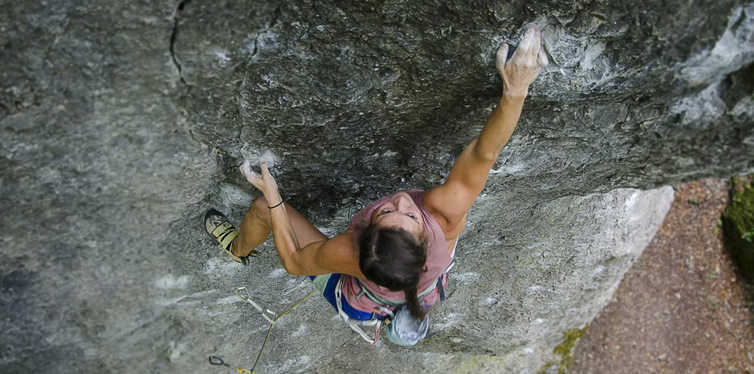
Lip Gloss is Poppin, and So Are My Lats
My chief complaint about anything with sleeves and most dresses is that your clothing will bust right under the armpit if you have large lats. I’ve gotten good at stitching this particular area of my clothing because nearly every dress and long-sleeved shirt I’ve owned has popped right here. If that spot doesn’t burst, it’s usually for one of two reasons:
- the area is overly restrictive of lat movement, and arm raises to an uncomfortable degree
- raising your arms results in the entire garment riding up with them (hello midriff)
I’m all about a good crop top, but whether or not our stomachs are exposed should be a choice. Our classic boulder shoulders don’t fit many tees, and it leads to sleeves that are too short, restricted movement, or having to upsize to clothing that doesn’t suit us.
Another significant issue is the lack of room so much athletic apparel has; even climbing apparel often fails to accommodate climbers’ biceps and upper arms. Boulder shoulders usually come with arms to match, and those arms also rarely fit into anything with sleeves. Even If we manage to wiggle our biceps in, there’s a good chance that the sleeve now restricts our movement. I’ve ended up in a lot of boxy tees and oversized shirts to accommodate for my shoulders and lats. While that style is in right now, that was not the case for a long time, and the trend will fade as they all do, and we need lasting solutions.
I remember a confidence-shattering moment in a LuluLemon dressing room where I realized my new body, complete with shoulders that could make men cry, had gone from a size 2 sports bra to a size 10 to accommodate my back. I looked at pinches of skin poking out over the bands and straps, trying to contain the monstrosity. As I tried to remove each sports bra, I was worried about breaking it or remaining forever trapped.
My body lets me ski tour up mountains, climb hard boulders, and multi-pitch in the alps. I should be proud of it. But when I have to upsize five sizes and still can barely move, when I see it ripple and bulge over bands and straps of the clothing that should be supporting me on big missions, you inevitably start to hate parts of it and grow a disdain. Apparel that doesn’t fit isn’t only a problem in the way we move through the world. It drastically affects the confidence of women and girls, athletes or not. Who cares if I can get car to car 18 pitches of alpine climbing if I can’t get out of a sports bra in a LuluLemon dressing room? LuluLemon might often fail in the way their tops fit big-shouldered women, but their durability is unmatched, which is why I do love certain products I own from them. I’ve had a few pieces for upwards of 5 years.
How do we fix this? A breathable, moisture-wicking, and stretchy triangle of fabric right below the armpit would allow for better stretch and less restriction for large lats and shoulder blades and help improve airflow. We could also allow more stretch or size to accommodate large biceps in the upper sleeves, especially in clothing geared towards rock climbers.
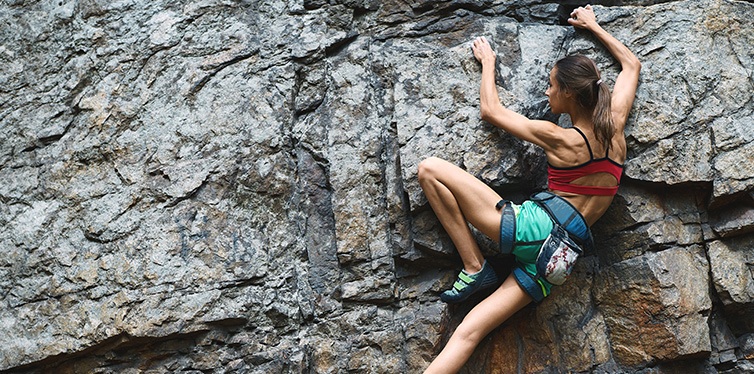
Bend Then Break
Athletic apparel problem number 2: the fabric that doesn’t stretch and move with us, and if it does, it breaks. Lack of durability in clothing is the chief problem I hear about from other femme-identifying friends. I remember sitting on a rock after climbing one day and feeling my leggings snag. As I stood up later, they ripped. Straight down the butt, and I had to hike out of the crag with my butt hanging out. I’d had them one day. A fall while trad climbing on slab ripped a pair of PrAna pants from ankle to thigh. To finish the climb, I cut them off at the thigh and used the fabric to cover my bleeding leg. Fall of a longboard? Knee gone in your favorite pair of leggings? Heel hook on that gym boulder? Inside seam of your legging trashed?
Additionally, many leggings tend to slide down as you wear them, leaving us to slide them back over our hips throughout the day awkwardly. I’ve tried leggings from Fabletics, Black Diamond, Teeki, Lululemon, and more, and while I have a few pairs that have made the cut — most give out after a few outings or a few months at best. I don’t enjoy shopping. Incongruent sizing between brands makes shopping horrendous, and if I’m investing $50-$100 in a pair of pants, those things better last. Would it be so hard to convert to a numerical system, i.e., 24, 25, 26, 27, and so forth?
How do we fix this? A numerical sizing system is an excellent place to start. Next, we can look at more thigh accommodation either in stretchy fabric or by leaving some wiggle room. Suppose a company is designing clothes for runners, swimmers, mountain athletes, skiers, lifters, or any active discipline where it is common to have large thighs. In that case, it is essential to consider allowing more space for our beloved thunder thighs. Otherwise, we’ll bust your seams with them.
We also need more durable fabrics in our athletic apparel We shouldn’t have to replace our pants constantly, and they should last more than a day. If you are designing and producing athletic apparel for backpackers, mountain athletes, skiers, or climbers, you should invest in materials that last and can withstand the elements we do. That means reinforced inner seams, fabrics that don’t snag and rip so quickly, and reinforced knees.
Lastly, we need to ditch seams through and above the crotch. The tension pulling upwards in that zone creates the dreaded camel toe, and we’re providing a point of failure where we need it least.
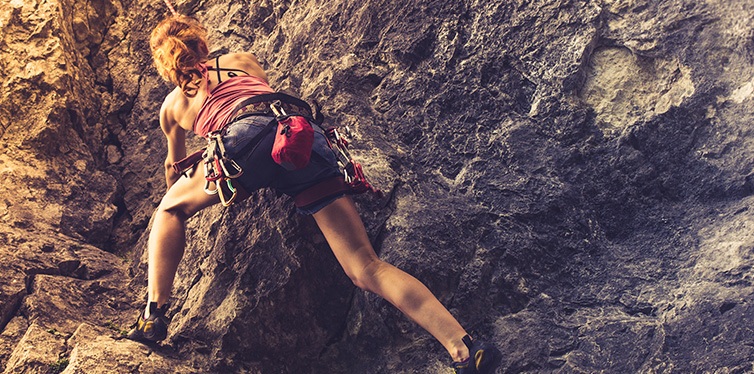
Let’s Talk Ta-Tas
Yep, we’re going there. People have breasts, and our breasts need support. The big thing here is this: we need options and inclusive sizing. Every chest is different, and having a smaller chest shouldn’t mean that the bra doesn’t accommodate lats, and a larger chest shouldn’t mean that you get less color selection.
Additionally, while I love the look of a nice, strappy sports bra, these straps often run right over lats and shoulder blades, therefore restricting movement — not okay. I have, on many occasions, climbed braless because the straps were keeping my shoulders from moving easily and engaging on hard boulders. Not everyone has the luxury of ditching their over-the-shoulder boulder holders, though. I once ordered bras from a small brand specifically marketing to climbers, yogis, and swimmers. Upon receiving my order, I found the bras were some of the comfiest I’d ever worn; they didn’t restrict my lats and felt good on my body. While gym climbing one day, I scraped the top of my bra against a climbing hold, damaging the material. Later, I realized while it bra could go in the water, swimming in it was impossible without flashing anyone who happened to be underwater. Super close to hitting the mark, but the company missed it with a lack of durability and functionality.
What Do We Need From Athletic Apparel?
We’ve talked about a lot of problems here, and there are more — but I’m only speaking for people who climb and wear women’s athletic apparel. Other populations have their own complaints and ideas about how to fix the fashion industry, and many of them are probably also valid.
What I’m trying to drive home here is that if a company is profiting from clothing and products for athletes, then it should ensure its products serve the bodies and the uses for which it intends those items. Full stop. If an ad showcases people climbing in the mountains, the company behind that ad should build athletic apparel capable of withstanding what the mountains demand of us.
Sources:
- How to Sew Athletic Wear – Seamwork Magazine
- The athletic apparel industry: Fitness or fashion? – The Daily Universe


